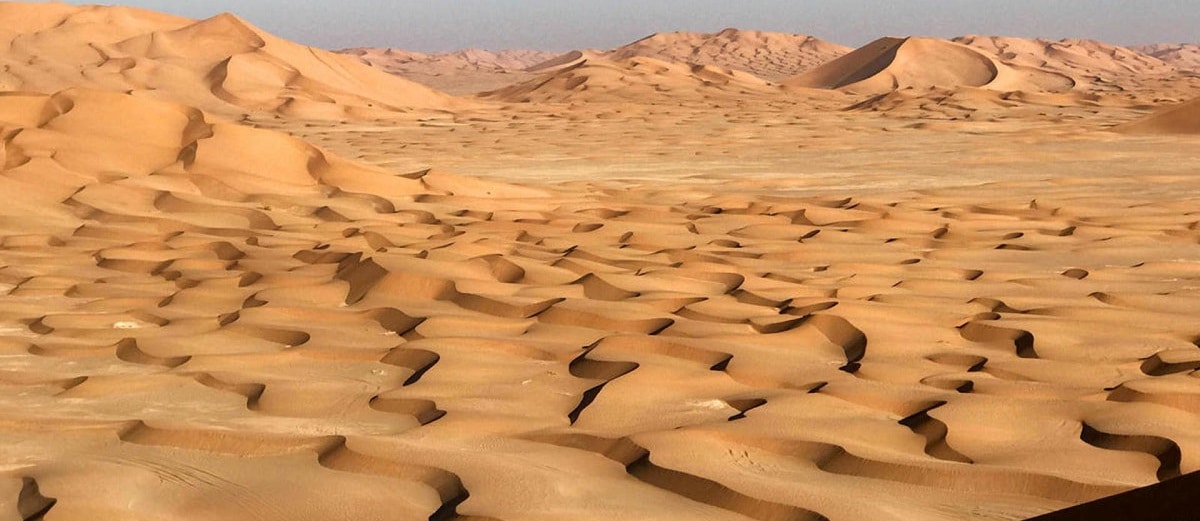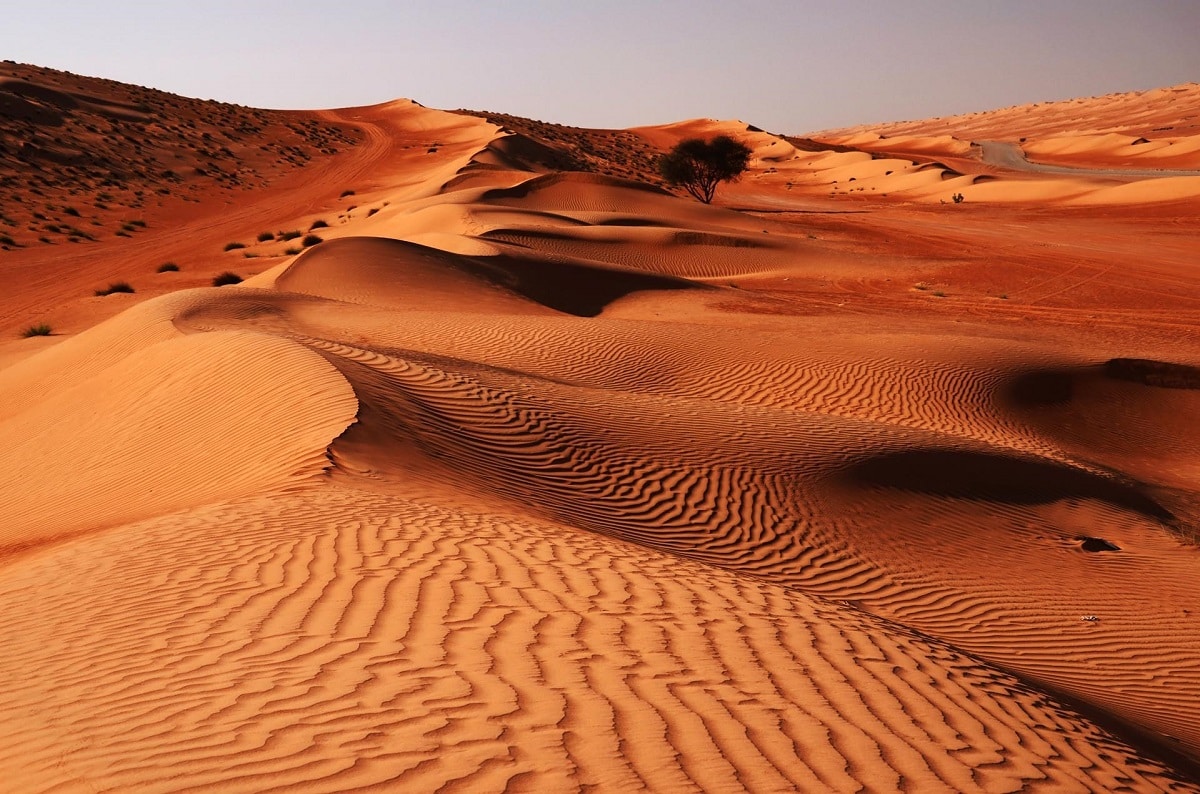
El arabian desert It is located in the southwestern region of Asia and spans much of the Arabian peninsula, encompassing several countries such as Saudi Arabia, the United Arab Emirates, Oman, and Yemen. It has an extension of approximately 2 million square kilometers and is considered one of the largest deserts in the world.
Therefore, in this article we are going to tell you all the characteristics, flora, fauna and much more of the Arabian desert.
Arabian desert location

Located between the Nile and the Red Sea, the Arabian Desert stretches from Yemen to the Persian Gulf and from Oman to Jordan and Iraq; most of it is in Saudi Arabia, but it is in Jordan, Iraq, Qatar, Bahrain, Kuwait, Oman, Yemen and Arabia. It is an important place on the territory of the United Arab Emirates.
It is a desert rich in minerals like gold, copper and precious stones, as well as oil and natural gas. At the center is the Al-Rubar Khali (or Empty Desert), one of the largest known continuous bodies of sand, part of the Palearctic Realm's arid scrub and desert biome.
The Arabian desert was the scene of one of the bloodiest wars of the late XNUMXth century, known as "Desert Storm," a decade after Iraqi dictator Saddam Hussein was defeated and sentenced to death when he invaded Kuwait.
The Arabian Desert is of great importance to the world, it has always been a commercial communication channel between the Middle East and North Africa. But it also contains deposits rich in hydrocarbons, such as oil and gas, sulfur and phosphates. Saudi Arabia's certified proven hydrocarbon reserves are the second largest in the world after Venezuela, estimated at 267 billion barrels.
Key features

This desert has one of the most striking landscapes of any desert. It features golden sand dunes that stretch as far as the eye can see, all the way to vast stony plains and towering mountains. The dunes have changing shapes that are constantly being modified by the action of the wind. Some reach great heights, creating a scene worth seeing.
The climate of the Arabian desert is extremely arid and characterized by intense heat. Daytime temperatures can reach easily 50 degrees Celsius in summer, while nights can be chilly. Rainfall is low and, in some places, years can go by without receiving a drop of rain. However, when a rare rain falls, it unleashes an astonishing phenomenon known as a 'blooming desert', where plants that have been dormant sprout and bloom rapidly, painting the landscape in vivid colours.
The Arabian desert is also home to quite an interesting cultural and historical wealth. It has been home to ancient civilizations and has witnessed important trade routes throughout the centuries. The ancient cities of Petra and Palmyra, for example, they were prosperous commercial centers that flourished in the middle of the desert. In addition, this desert has been a source of inspiration for countless tales and legends, which have been passed down from generation to generation.
terrain geology
It is a desert that has everything from red dunes to deadly quicksand, like that of rub al-Jali. Its topography has been altered by a series of mountain ranges, at an altitude of about 3.700 meters, bounded by 3 steep cliffs.
At least a third of this desert is covered by sand, such as the rub al-Jali sandbar, which is an inhospitable area, very hot and with an unbearably arid climate. It is found predominantly in Saudi Arabia and traverses the aforementioned countries, which vary in geographic features, such as the ecoregion that includes most of the Sinai Peninsula of Egypt and the southern Negev Desert in neighboring Israel.
The Rub Khali desert is a southeast-northeast basin on the Arabian platform. With 250-meter-high sand dunes on the beach, Wahiba Beach in Oman forms a sea of sand that encircles the eastern coast.
The Tuwaiq Cliffs feature 800 kilometers of curving limestone cliffs, mesas and canyons. Yemen has no permanent bodies of water, but it does have the Tigris-Euphrates river system in the north and the Wadi Hajr river in the south.
Flora and fauna of the Arabian desert

Flora
The flora and fauna of the Arabian desert have had to evolve and achieve adaptation and resistance to the harsh conditions of the environment. Desert vegetation consists mainly of hardy plants such as frankincense bushes, tamarinds, and acacias, which they have developed mechanisms to conserve water in their tissues and survive in dry and sandy soils.
One of the best known trees of the Arabian desert is the date palm. These palm trees are an important source of food, shade, and construction materials for communities that live in the desert. In addition, they are a symbol of life and prosperity in the midst of an apparently inhospitable environment.
Fauna
As for fauna, the Arabian desert is home to a surprising variety of species adapted to the scarcity of water and extreme heat. The dromedary camel is the most iconic animal of the desert. These animals are perfectly adapted to survive in difficult conditions, with their long legs that allow them to move easily through the sand and its ability to store large amounts of water in its hump.
Other mammals found in the Arabian desert include the Arabian oryx, a spiral-horned antelope, and the desert fox, which has evolved hunting skills and physical adaptations to withstand high temperatures. Also, you can find small rodents like the gerbil, which have developed long hind legs to jump quickly and escape from predators.
As for the birds, although it may not seem so, this desert is a refuge for many migratory species. You can spot majestic birds of prey, such as the peregrine falcon and golden eagle, as well as smaller birds such as the kestrel and the nomadic sandgrouse. These birds find food in the desert and use rising air currents to fly long distances during their migrations.
I hope that with this information you can learn more about the Arabian desert and its characteristics.